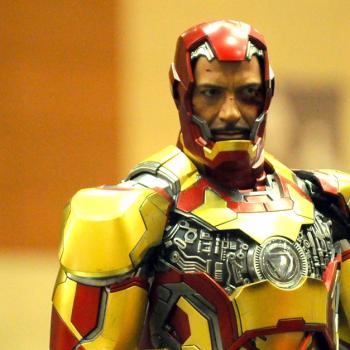I met with Perry Tell, a musician who’s moved into tech. He’s the COO and co-founder of Inmoji, which describes its product this way:
Inmoji generates revenue for messaging platforms and enhances brand engagement by connecting consumers with their favorite brands through in-message clickable icons called “Inmoji.”
So, rather than an emoji that just enhances a text conversation, Inmoji let users click through to a brand Website — or potentially anything else. Said Tell:
The messaging platform need solutions for monetization and engagement, for user acquisition and retention. How do we solve that, right? The brands want to get at this enormous audience that’s out there sending billions to hundreds of billions of messages a day on a worldwide basis. How do we solve that with it and how do we give consumers more choice of content with what they want? How do we get everybody in this world, this ecosystem really, really happy?
That’s why we created what we created. We’ve created what we call an engagement platform, which enables an opt-in to another content set. Which are clickable branded experiences that hopefully are deeper than just the standard ad banner and engagement, that could actually give somebody a real value or real utility. If we can do that while making money from the brands because we’re able to deliver deeper insights from those clicks, because it’s never been done before, wouldn’t that be interesting. We concur that it would be quite interesting.
And, unlike a banner ad or a pop-up that intrudes unbidden on your experience, an Inmoji link is shared by another person. Tell says Inmojis can also be used to make reservations, or to share links to content sources like iTunes.
Obviously, Tell and his colleagues created Inmoji to be used to market brands, but like many tech platforms, it’s really content-agnostic. It shares whatever the user wishes it to, and that could as easily be links to devotionals, sacred music, prayers and other Catholic content. The imagination is the limit.
D-Box — The Power of Experience
Behind an unassuming and largely unmarked facade in the San Fernando Valley of Los Angeles is a company creating magic. D-Box likes to stay on the down-low, since many of their customers are working on entertainment and other projects that require a high level of confidentiality.
Headquartered in Quebec, D-Box’s business is creating experiences. That could be simulations — including ones that allow businesses to train heavy-equipment operators, for example — or specialized theater seats and equipment that enhance the reality of moviegoing.
Said vice-president of marketing Michel Paquette:
Just to give you a perspective of how we started, we included a motion track for one of the first IMAX movies that was a car, driven by Mario Andretti. The car is sitting on jacks and you have the big camera in the back and you see his head from the rear. They put the vehicle on the ground. Boom. Then you feel it, and then they start the engine. Just the starter gives you a little bit of a vibe. Then the torque of the engine. Then he’s heading on the track and you know, you see the pavement changing.
That was like nine years ago, and I said to the encoders, I said, “You guys have done such a great job.” I said, “I’m a car guy. Could you add this, add this and that?” They said, “Sure.” I said, “It’s so realistic.” We had a professional driver to come in. He says, “Wow. Could you do this in real time?” I said, “We have to find content. We’re not content providers.”
I got to test out one of D-Box’s theater seats. While a scene from a World War II movie played, the seat moved and vibrated in concert with the tank-combat action of the scene. This was an enhancement of a two-dimensional film, but one can imagine the greater impact of an IMAX or 3-D film, or even of a true immersive experience. At other tech conferences recently, I heard talks from virtual-reality experts that describe ways to create a three-dimensional experience — with a dome or other specialized space — that immerses the attendee in sound, sight and all other senses.
Currently marketers are using similar technology for simulated test drives of high-end cars, or to give people a taste of life at an exotic resort. But think about exploring the Temple of Jerusalem at its height; joining the shepherds at the Nativity; walking across water with Peter; standing with the Apostle John and Mary at the foot of the Cross; touring a time-lapse depiction of Notre Dame Cathedral as it’s being constructed; or walking through the Umbrian woods with St. Francis.
Or, in a contemporary sense, standing in St. Peter’s Square during a papal Mass, even if you’re not able to get on a plane.
New technology offers opportunities to bring the Faith alive. The Stations of the Cross in our churches were originally developed because the Church recognized that not everyone would be able to make a pilgrimage to the Holy Land, and that’s as true today as it was then.
From the Roman roads to the printing press to the Internet, technology has never been the enemy of Faith. It’s all in how you use it.
Image: Courtesy Microsoft
Don’t miss a thing: head over to my other home at CatholicVote and like my Facebook page.

















